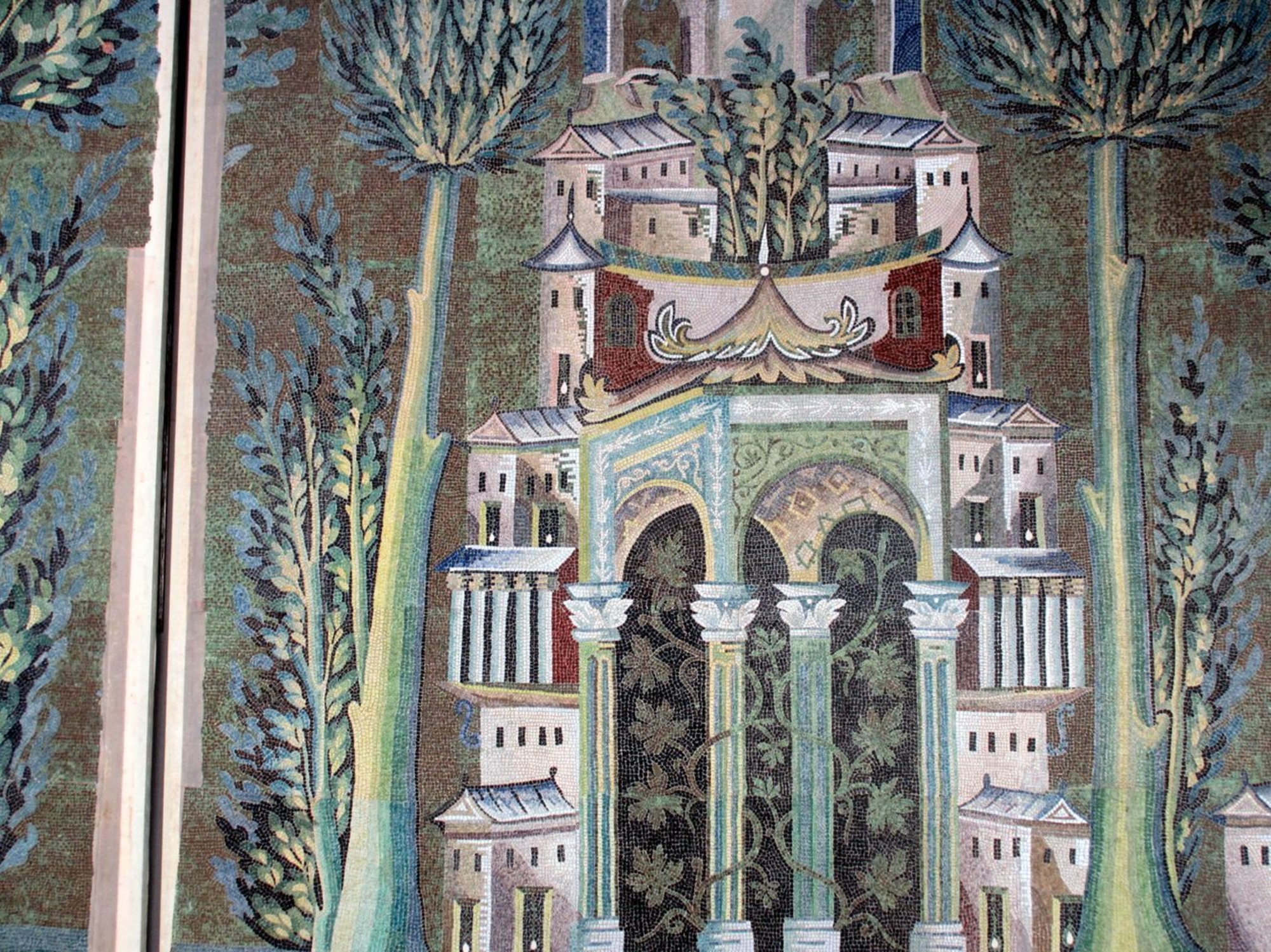- Home
- The mosaic decoration
- Mosaics: an art of colour
- Setting tesserae
Mortar
Tesserae were arranged according to a preliminary drawing. The wall was made perfectly flat by applying a first layer of lime mortar. A second, thinner and purer layer of mortar, the setting bed, was used to set the tesserae which were pressed into the damp mortar. The mosaicist would never apply more mortar than needed for a day’s work.
The preparatory drawing
Before setting the tesserae, underpaintings with the main colours were executed on the damp setting bed. The mosaicist used the underpainting as a guide. It was a simplified colour code with no shading and one colour could denote several tessera colours. The pigments of the underpainting can still be seen in areas exposed by fallen tesserae.
Setting golden tesserae
Golden tesserae were set in a specific way, especially high on walls. Their ends were pointed downward in the direction of the onlooker to enhance reflection. The higher gold tesserae were arranged in horizontal lines rather than end to end and spaced roughly one centimetre apart. The gap between the lines was painted red. This way they economised on expensive tesserae.
